Sarajevo is undoubtedly the most amazing city I ever visited. Surrounded by raw mountains, multicultural, and an extraordinary atmosphere of openness mixed with melancholy, I could spend a lifetime exploring its secrets.
Check out my list of off-the-beaten-track things to do in Sarajevo (and some more popular places to see that you can’t miss out on). Since I am a big fan of outdoor activities, a big chunk of my recommendations will be hiking and biking ideas around Sarajevo, combined with cultural experience.
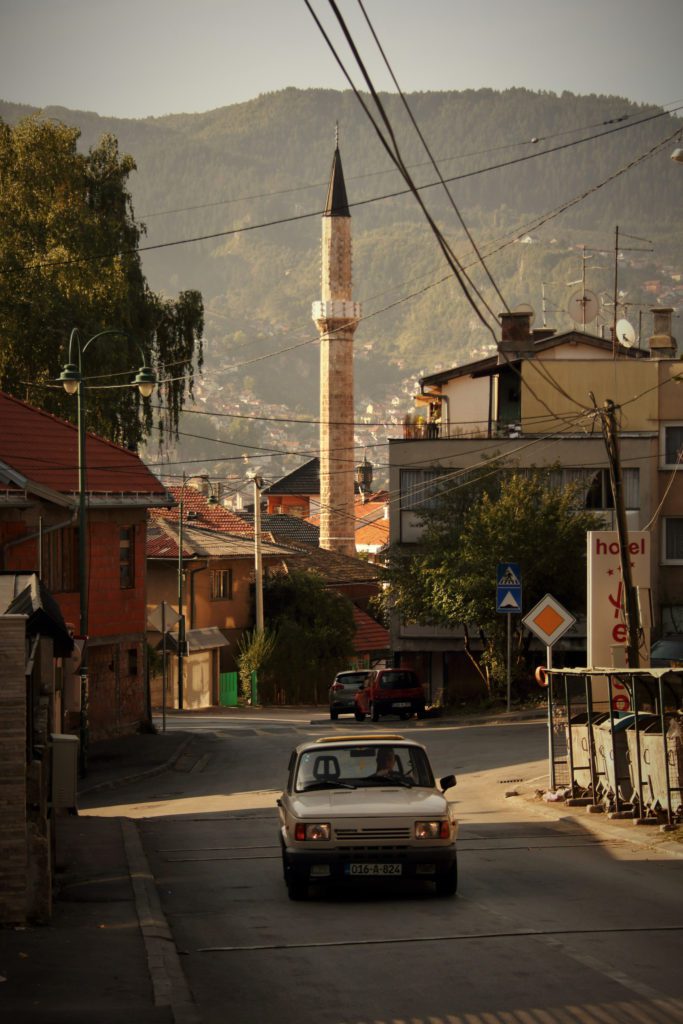
The classics
As much as I like to step off the beaten path, I believe there is a reason some sights in Sarajevo, like Baščaršija or the bridges on the Miljacka River, are so beloved. Here is my way to enjoy them the most.
Take a coffee on Baščaršija
Every time I visit Sarajevo, I wake up early in the morning and head straight to the Old Town. The narrow cobbled streets of 15th-century Baščaršija are still empty at that time of the day. I can just breathe in the unique atmosphere of this place and watch the bazaar slowly wake up to life.
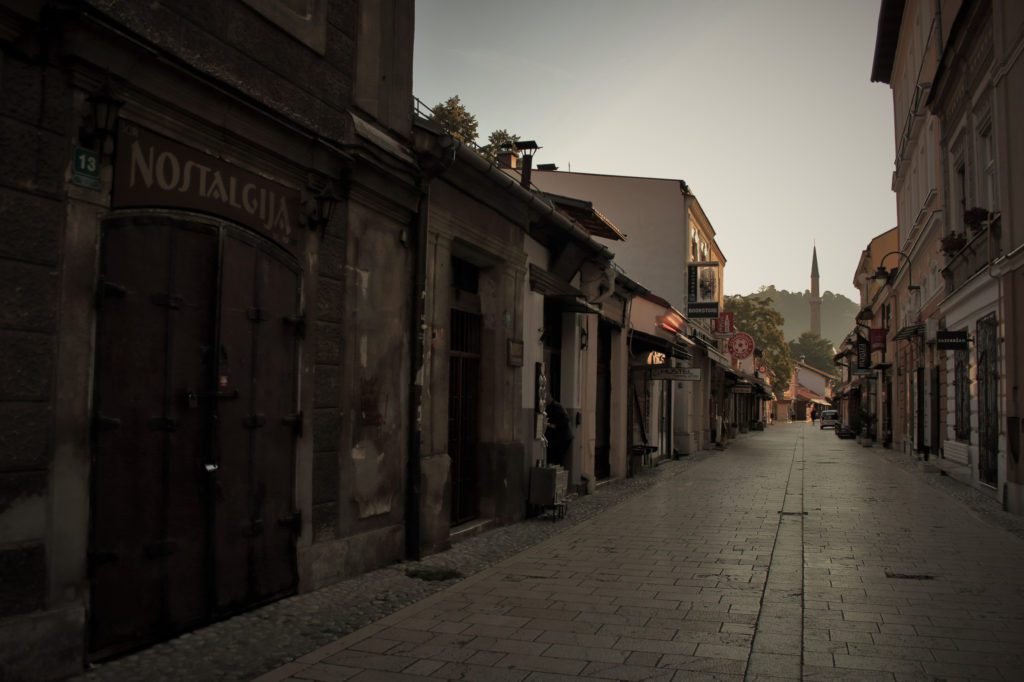
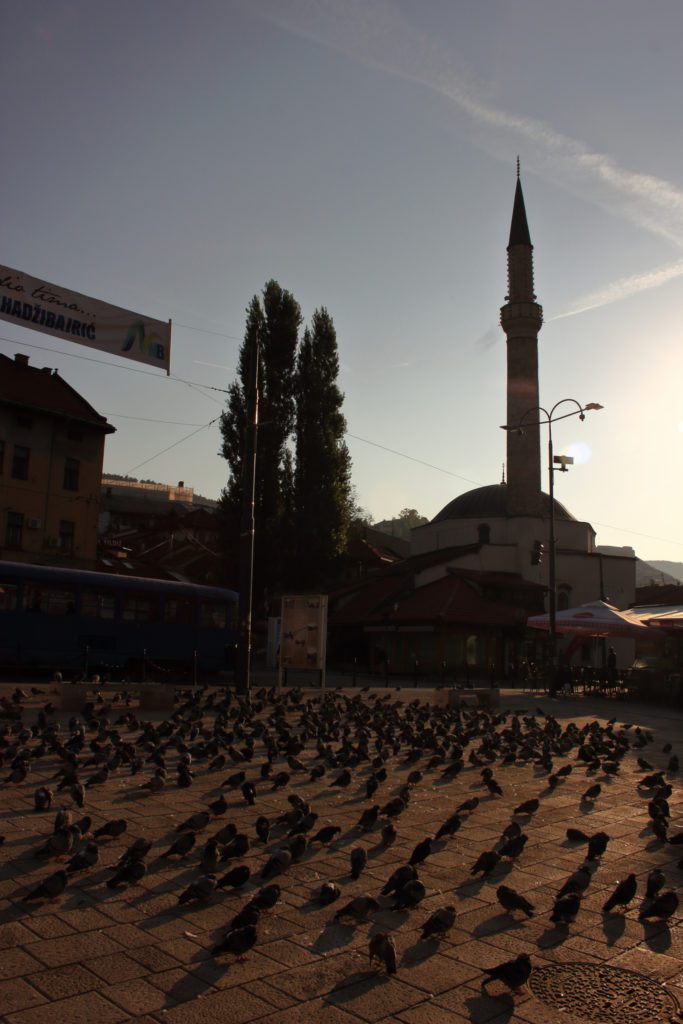
I order a traditional Bosnian coffee, served in džezva – a beautiful copper pot and watch the elderly gentlemen meeting up and slowly sipping their coffee. After that, I get lost in the steep streets to always discover new places.

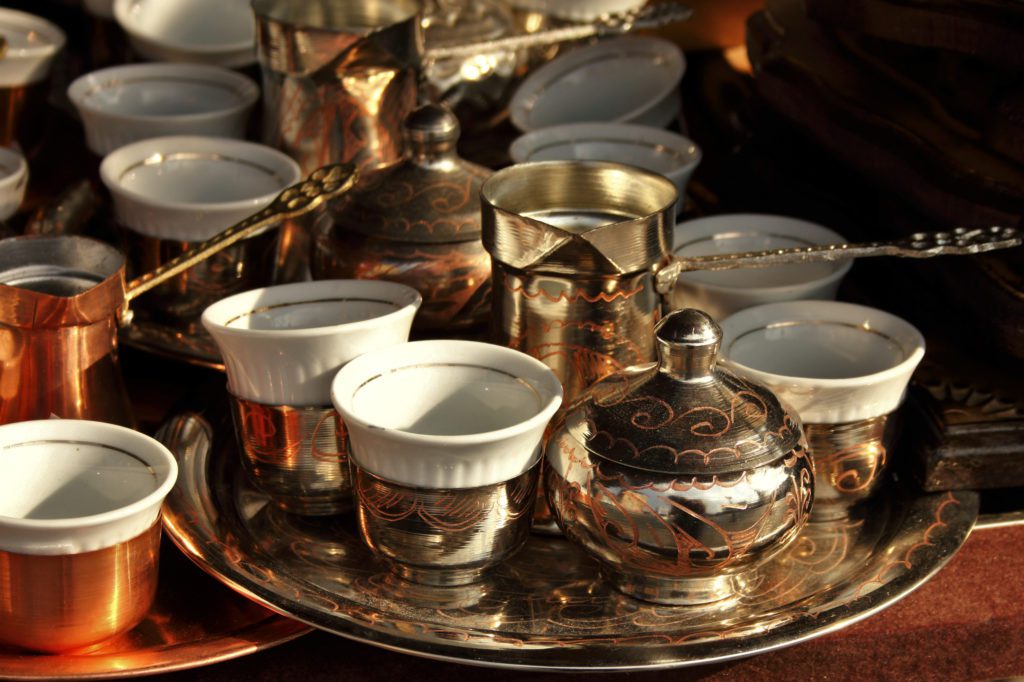
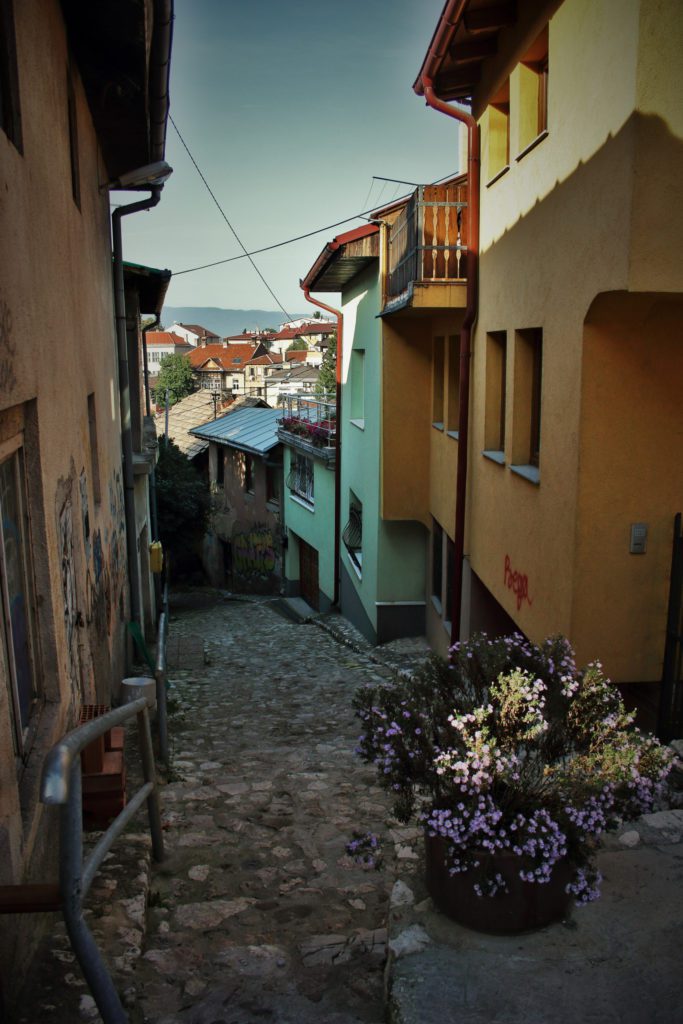
Watch the best sunrise in Sarajevo from the Yellow Fortress
The Yellow Fortress or Yellow Bastion is an 18th-century fortress and, in my opinion, the best spot to watch the sunset in Sarajevo. It offers a spectacular panorama of the city. The sky turns orange, the thousands of white graves covering the hills light up with the warm light, and the muezzins from all the minarets across Sarajevo start singing and calling to prayer. It always gives me chills.
If you come here during Ramadan, you will also see the canons firing at sunset to announce the time to break the fast.
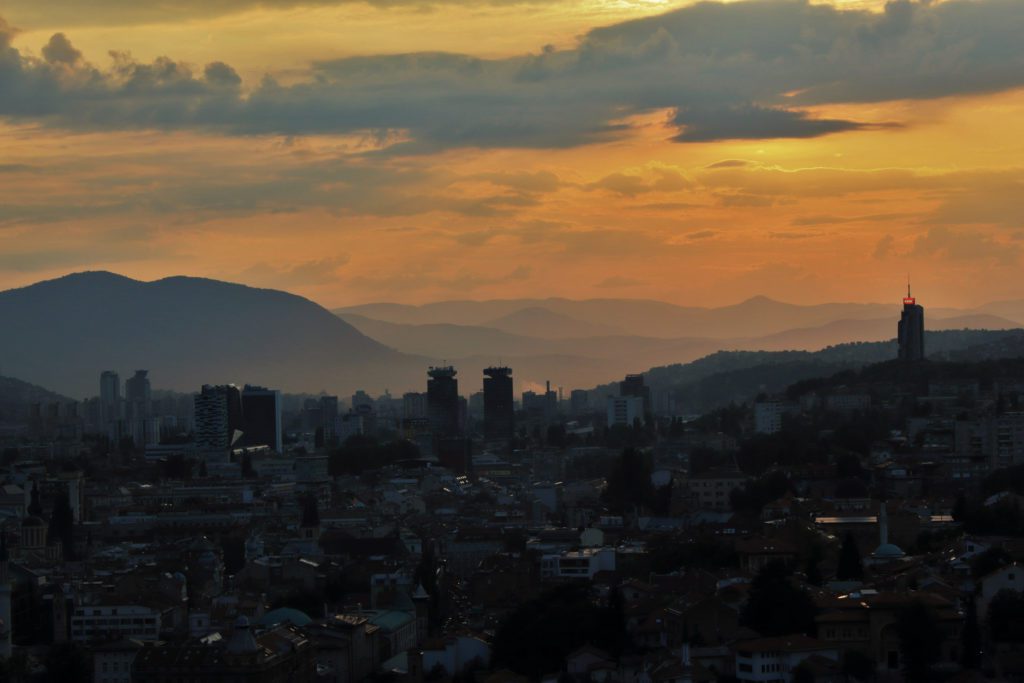
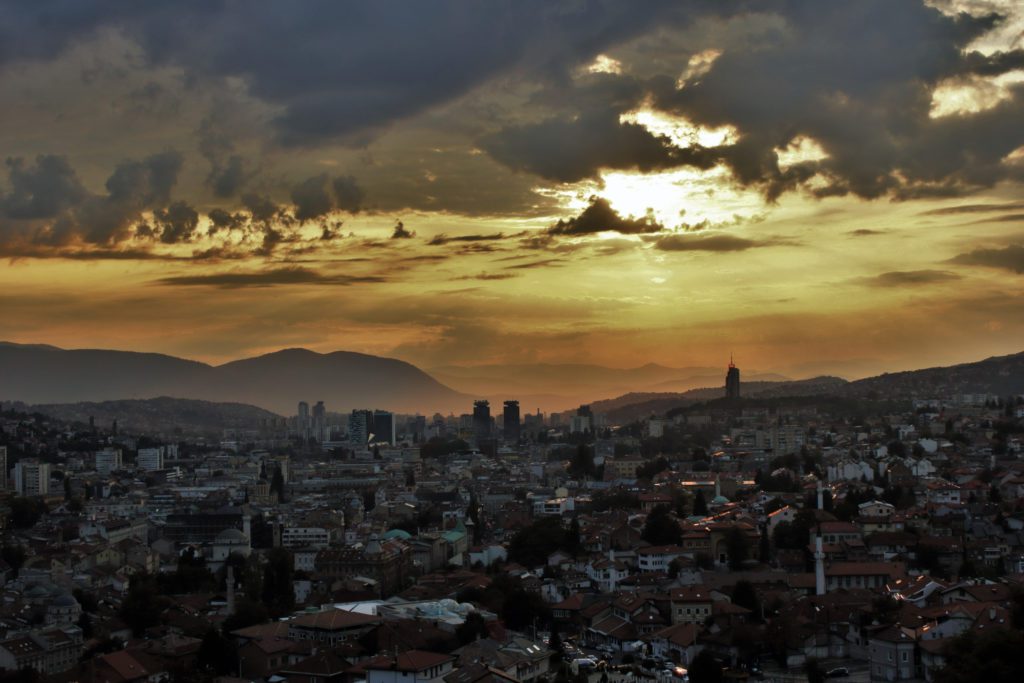
Stroll along Miljacka River
The walk along the river is probably the only flat walk you can do in Sarajevo. Everywhere else, it will be uphill.
Take your time and simply admire the beauty of the bridges. They witnessed some important historical events.
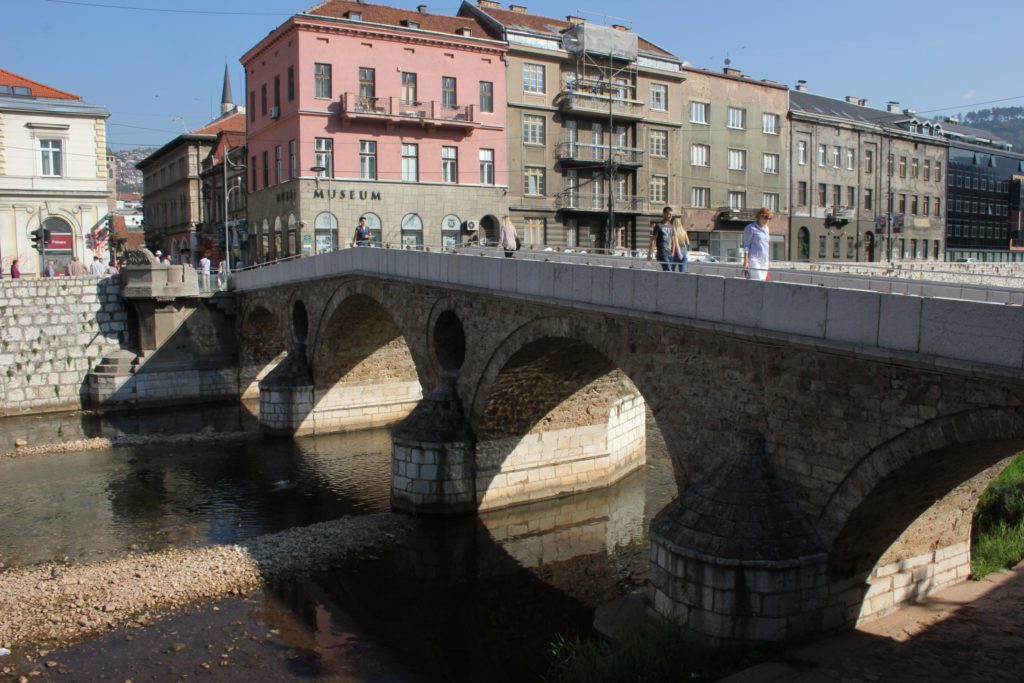
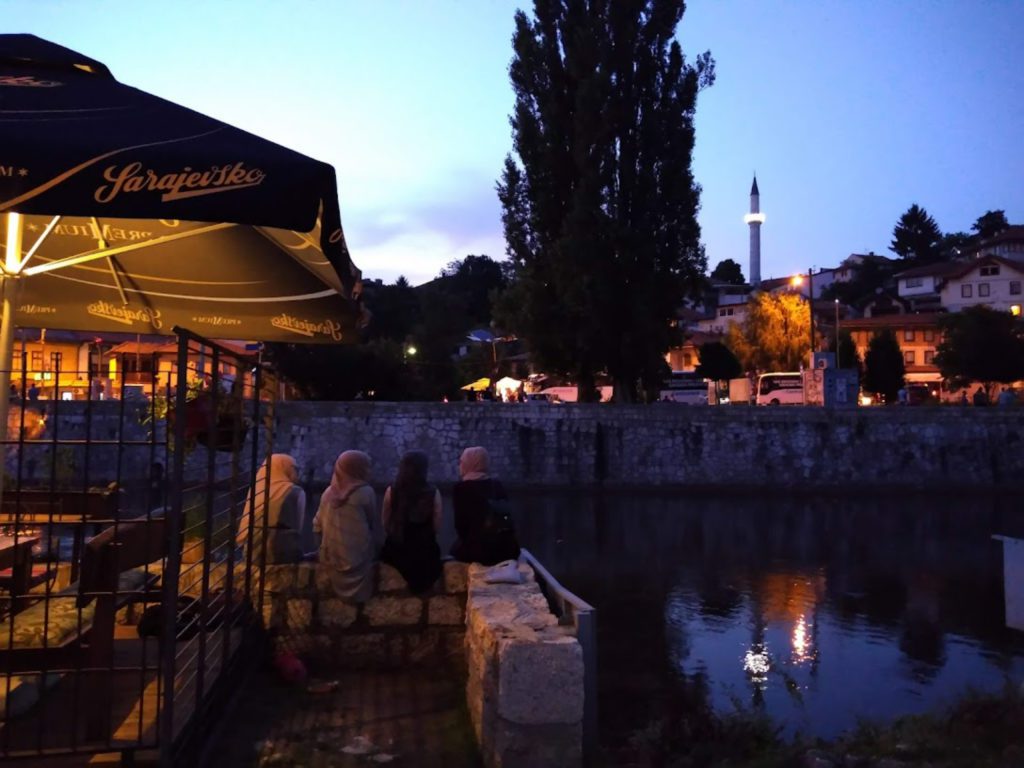
The Latin Bridge was where World War I started when Gavrilo Princip assassinated the Austro-Hungarian Archduke Franz Ferdinand and his wife.
The Vrbanja Bridge, also called Sarajevo’s Bridge of Love has witnessed more than one tragedy. On April 5th 1992, snipers killed two young women, Suada Dilberović and Olga Sučić there. They were among the first civil victims of the Bosnian War.
A little more than a year later, a 25-years old couple was shot on the Vrbanja Bridge trying to escape the besieged city. Boško was Serb and Admira was a Muslim. Coming from opposite sides of the conflict, a Reuters correspondent Kurt Schork called them Sarajevo’s Romeo and Juliet.
Sarajevo Tunnel
Coming to Sarajevo, you will instantly see the reminders of the last war. Although 26 years have passed, many buildings still have bullet holes and people you’ll meet on the streets still carry the weight of memories of the four-year siege.
If you want to understand their story better, visit the Sarajevo Tunnel. Located under the airport, The Tunnel of Hope was used to transport food, weapons and humanitarian aid and escape the besieged city.
You can visit the tunnel and the museum independently (the ticket costs 10 KM, bring cash as no payment by card is possible) or sign up for a guided tour.
Off-the-beaten-path places in Sarajevo
War Childhood Museum
To truly understand the reality of war, I recommend you visit the War Childhood Museum. It was founded by Jasminko Halilovic, who experienced the Bosnian war as a child. A few years ago, he started a project collecting memories of other war children online. He published a book with their stories and opened a museum with items connected to these memories.
You will find there their toys, photographs, diaries, food cans…
The museum focuses on the conflict in the Balkans, but a part of the expositions are the stories of the children who experienced the war in Syria, Ukraine and other places.
Reserve some time to recover after the museum visit – I needed a two-hour walk to process what I saw.
Giant David Bowie mural and a monument of.. a canned beef
Near the bus station, you will find a few extraordinary monuments and street art pieces. One of them is a giant mural of David Bowie, painted by the Marvel comics illustrator Enis Cisic and Zoran Herceg. The British singer was very invested in raising awareness and humanitarian aid for the victims of the Bosnian war. The residents of Sarajevo paid tribute to him with a 13 metres high and 10,5 metres wide mural painting on one of the buildings on the campus of the University of Sarajevo.
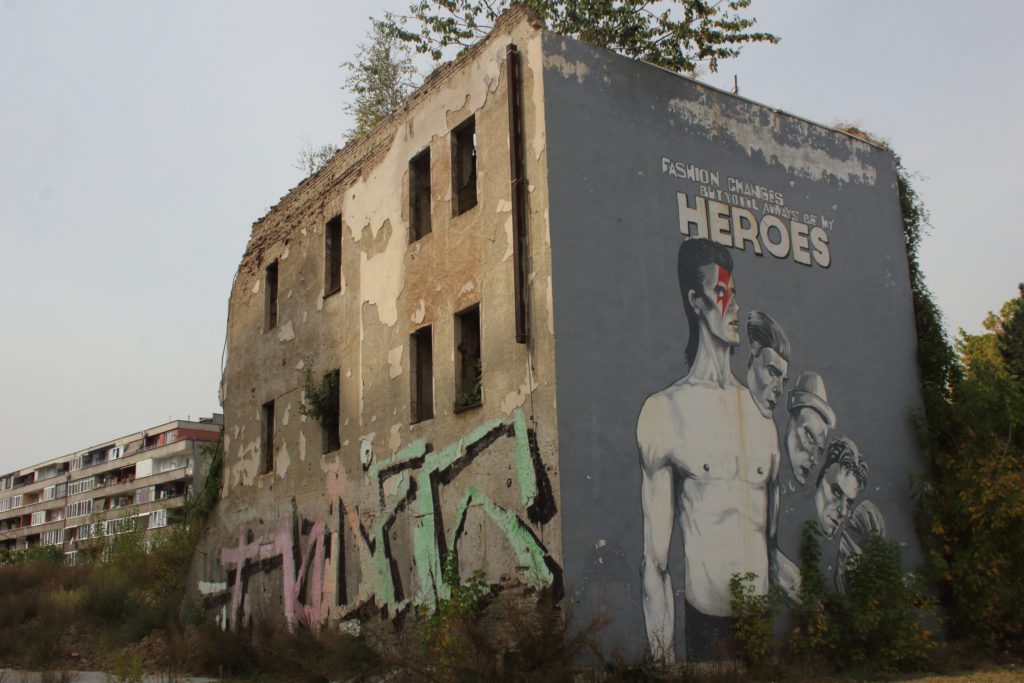
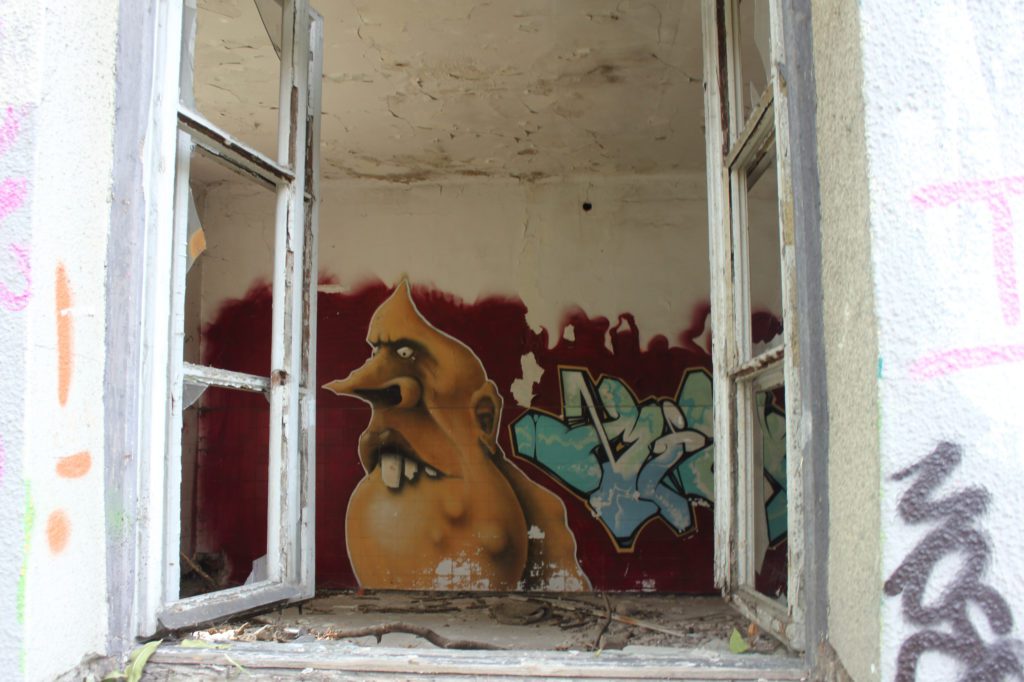
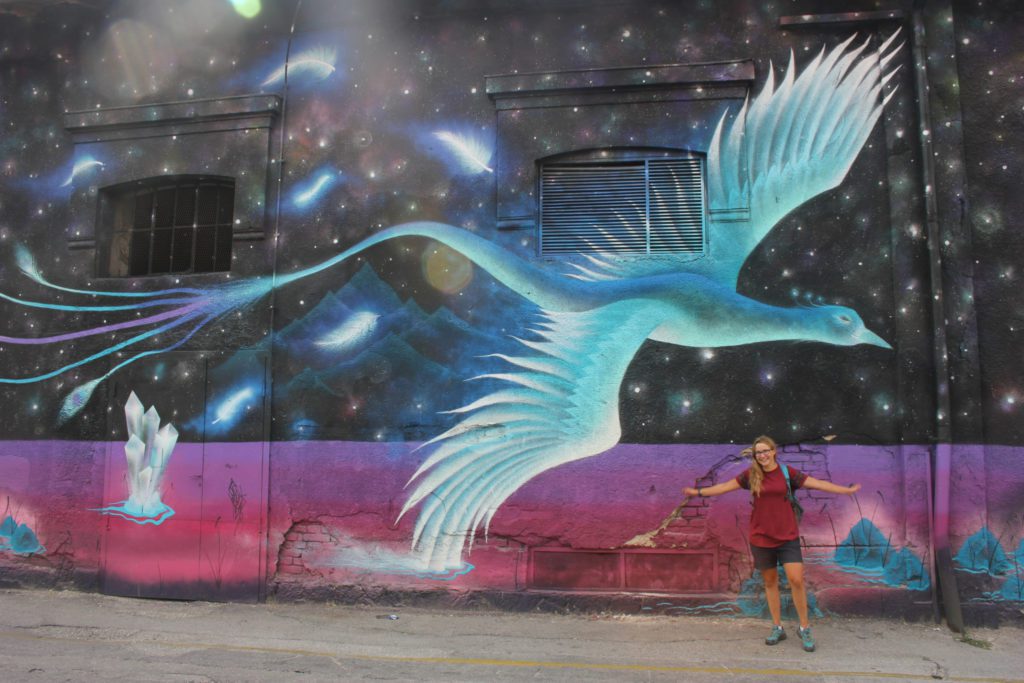
Another unconventional piece of art in this area is the ICAR canned beef monument. The sculpture located near the Historical Museum of Bosnia & Herzegovina is a memorial to the food delivered by humanitarian organisations during the Siege of Sarajevo. Unfortunately, it was often inedible. Some of the canned meat delivered to the besieged capital were leftovers from the Vietnam War that expired 20 years earlier. Even stray cats and dogs refused to eat it.
This unusual monument is an ironic commentary on the inadequate help from the international community. The residents of the besieged Sarajevo would much prefer weapons to the long-expired canned meat, but due to an embargo had to use the help of Colombian cartels to smuggle the weapons and ammunition.
Outdoorsy things to do in Sarajevo
Not many people associate Sarajevo with outdoor activities and adventure sports. Surrounded by four Olympic mountains of Trebević, Jahorina, Igman and Bjelašnica, the capital of Bosnia and Herzegovina is an excellent destination for outdoor lovers. Some great hiking trails start almost in the city centre. If you get tired of the hustle and bustle of the city, you can easily escape into the green mountains.
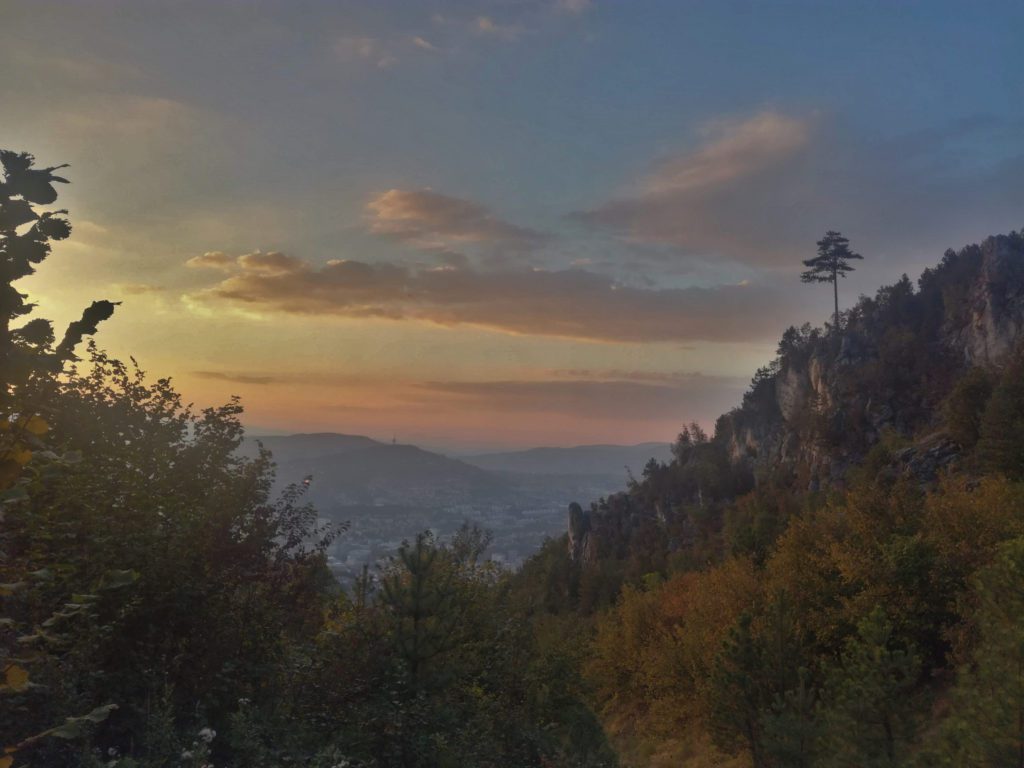
Trebevic mountain
For years, Trebevic mountain (1627 m) has been the favourite leisure spot for the residents of Sarajevo. The lungs of Sarajevo are the closest and easiest reachable mountain from the city centre.
Hiking to Trebevic
You can either take the kolejką linową or walk all the way to the top. It’s a long, almost 20-kilometre hike from the city centre, but technically easy. A big of it part leads through a forest, so you can find some shade during hot summer days. You can find more information about the route tutaj.
On the way to the top, you will pass the abandoned astronomical observatory Čolina Kapa and the bobsleigh track from the Olympic Games in Sarajevo in 1984 covered in graffiti and bullet holes from the war in the 1990s.
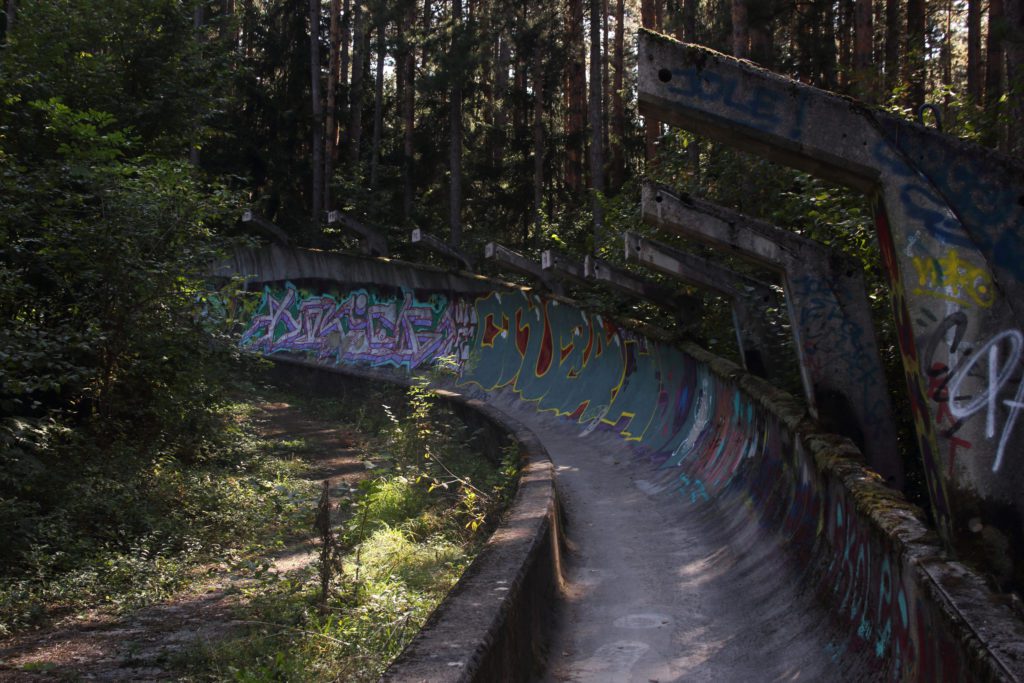
During the 4-year-long Siege of Sarajevo, Trebevic became a dreaded place from which the snipers and artillery attacked the city.
26 years after the war ended, the signs of the tragic past are still visible, but Trebevic is again the place where the Sarajevans go to relax and breathe in some fresh air.
SPD Jure Franko Trebevic
If you want to spend a night in the mountains and watch the sleeping city from above, visit SPD Jure Franko Trebevic (I spent 10 days there as a volunteer during my bicycle tour in 2018). It’s a super off-grid mountain hut run by a friendly mountain man – Primoz, and some volunteers. If you plan to visit on a weekday, call Primoz to check if someone is there.
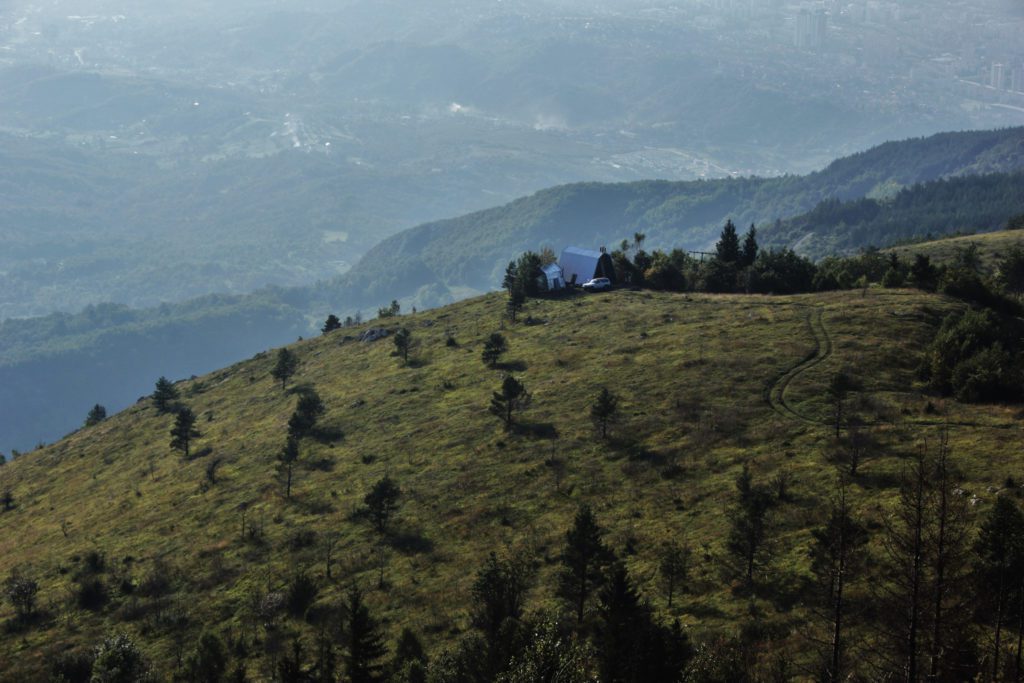
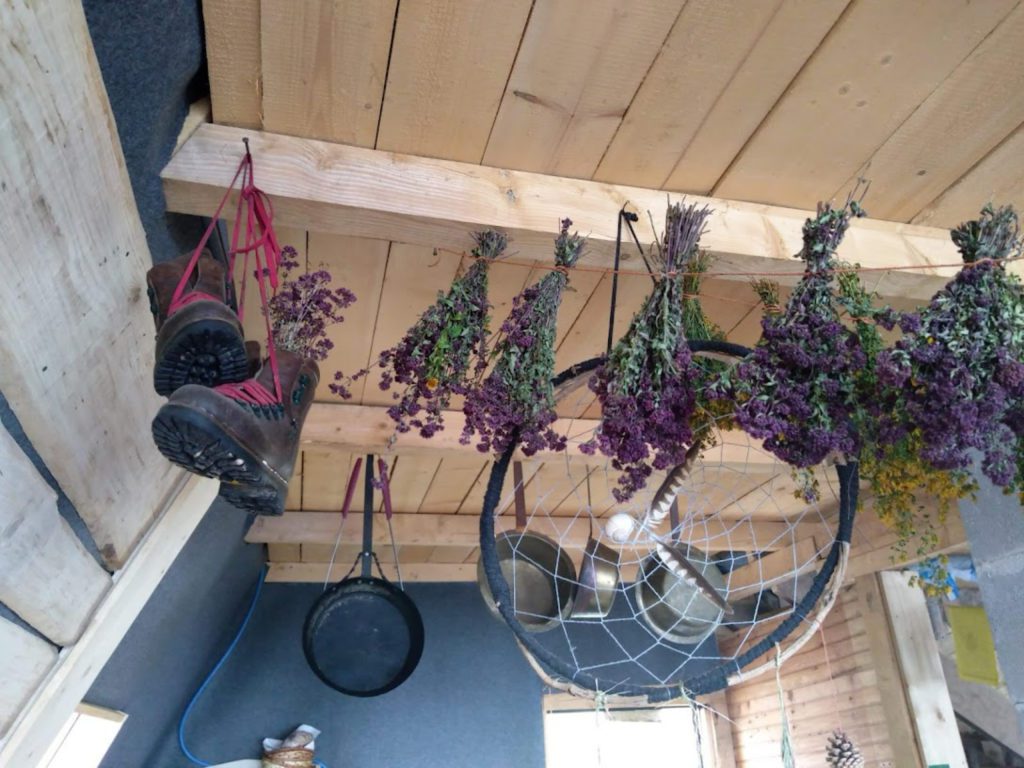
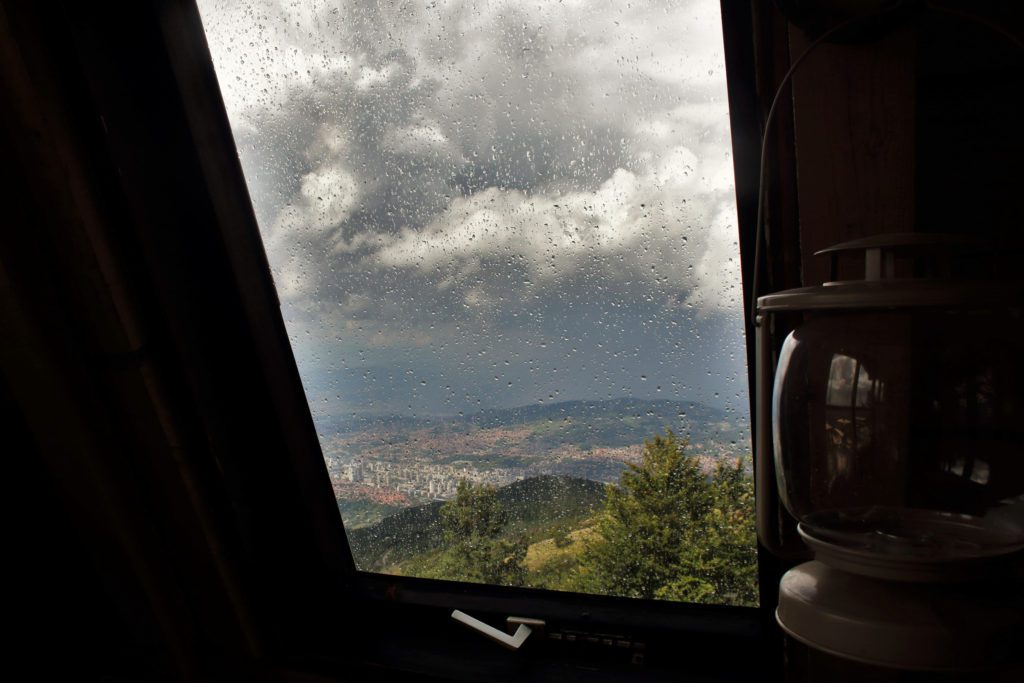
The hut is pretty basic. The owner brings the water with his off-road car from the spring in Dobra Voda) and there is no electricity, so you can just enjoy the beautiful nature and the company of some wonderful people who love to come here.
The terrace offers the best view of the city and the surrounding mountains.
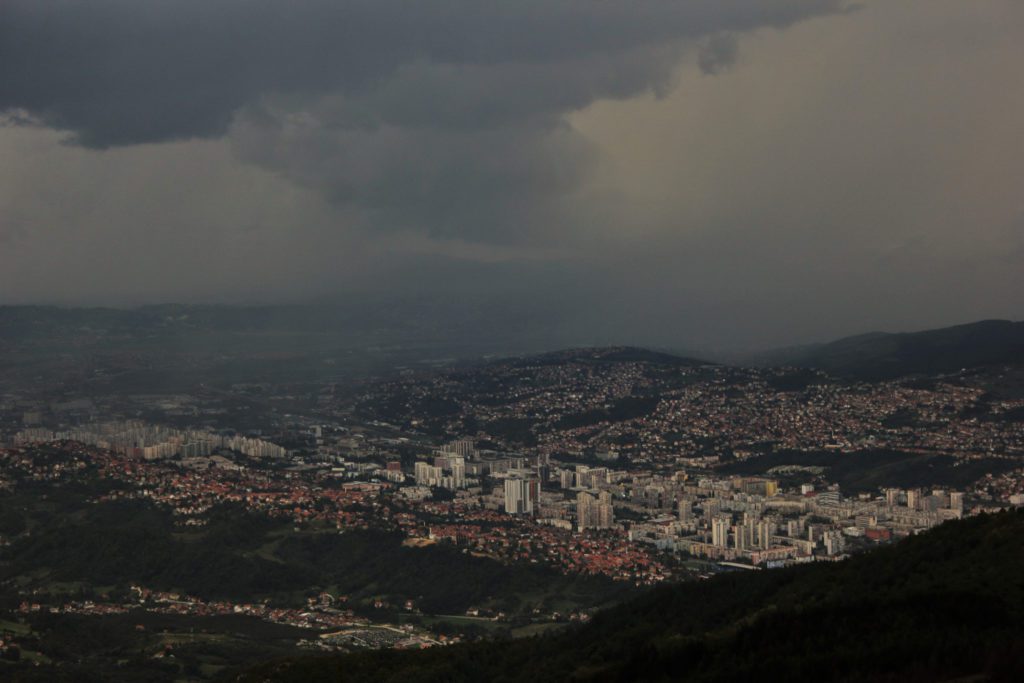
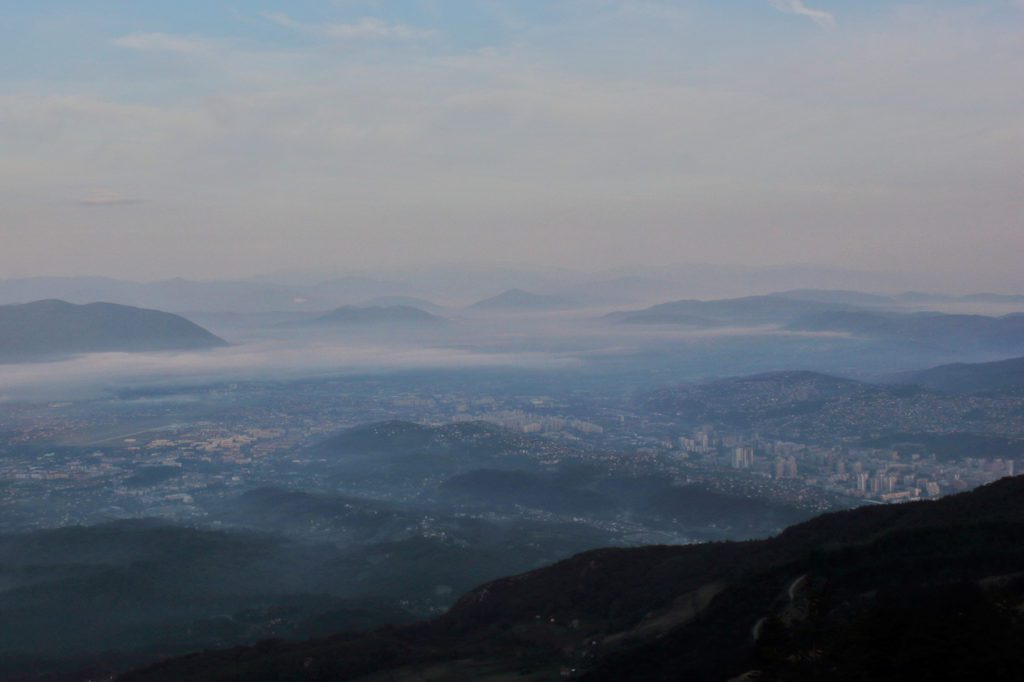
If you want to save time, you can also take the famous Trebevic cable car and enjoy the view from the gondola. The nine minutes ride will cost you 15 KM one way or 20 KM for a return ticket. The cable car’s upper station, Vidkovac, is located at 1160 m a.s.l. From there, you can enjoy the panorama of Sarajevo before heading to the bobsleigh track and the mountain top.
If you have a car, you can also drive to restaurant Brus and park your car there.
Cycling on Trebevic
Trebevic is also a terrific place for mountain biking. If you love adrenaline, definitely check out the Trebevic downhill track.
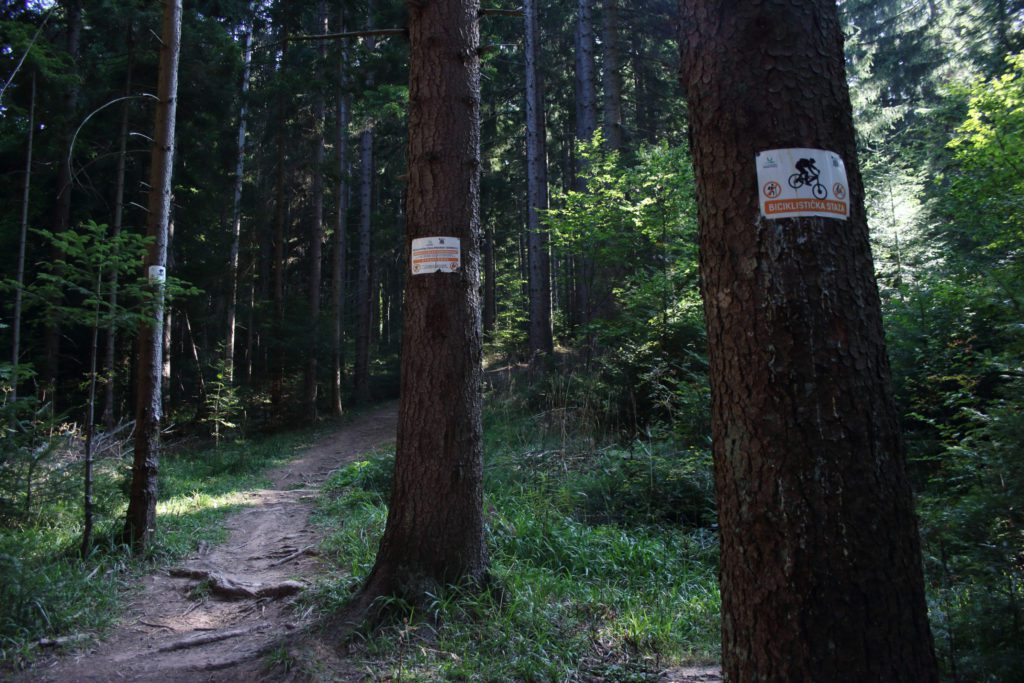
If you are more fearful like me, plenty of windy roads and trails around the mountain will allow you to enjoy the wild Balkan nature. The last time I visited, I went for a morning ride with Thierry from Green Visions, which was a challenging but fun experience.
I recommend getting a guided MTB tour with Green Vision – they will show you all the hidden spots around the mountain.
Check out also my article about my favourite long-distance cycling routes in the Balkans.
See the Skakavac waterfall and try Dragan’s rakija
Just 12 kilometres from Sarajevo, you can find one of the tallest waterfalls in the Balkans. Skakavac (it means a grasshopper) falls from 98 metres and is surrounded by intensely green plants.
The path to Skakavac waterfall starts in Nahorevo village. You can get there by bus (number 69 from Sutjeska Street) or by taxi. The trail is easy and can also be done by a mountain bike. Check out the route to Skakavac tutaj.
On your way, you absolutely have to stop for a snack or a drink at Hotel Promaja. Don’t let the name fool you. Promaja is not a hotel but a rustic mountain hut managed by a hearty Sarajevan. Dragan left the city life and moved into a small wooden cabin where he now greets hikers with delicious rakija and some good stories.
During my visit to Sarajevo, I had an impression that everybody knows Dragan and vice versa. While I am not a big fan of spirits, I absolutely loved Dragan’s aromatic pine needles rakija.
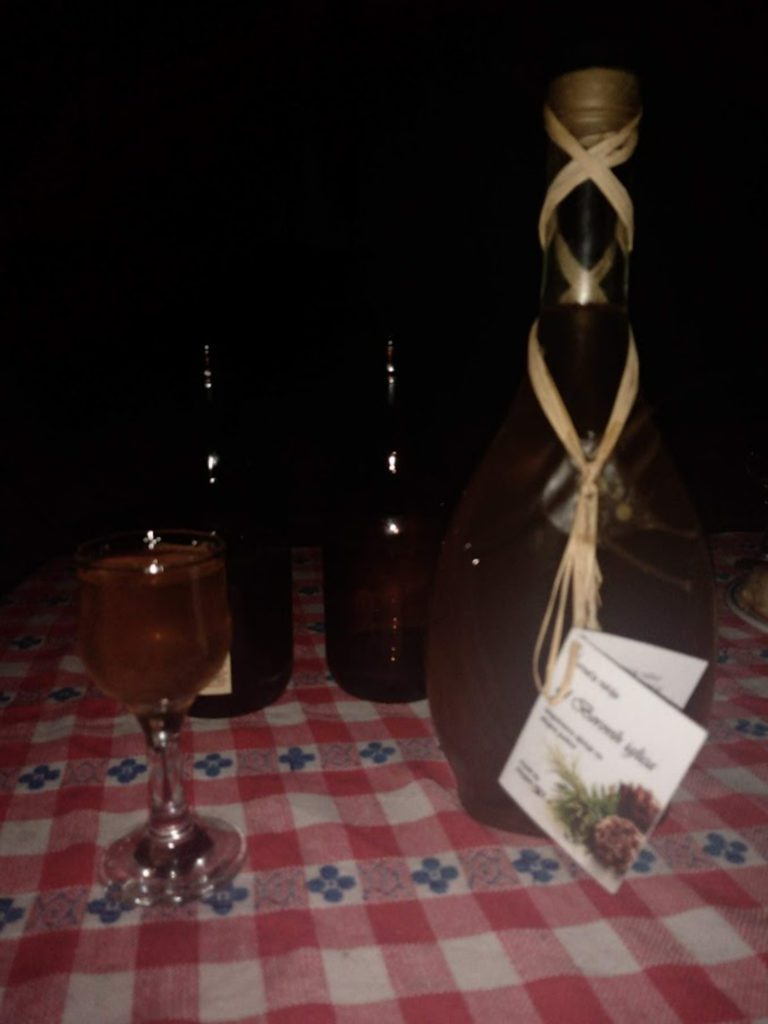
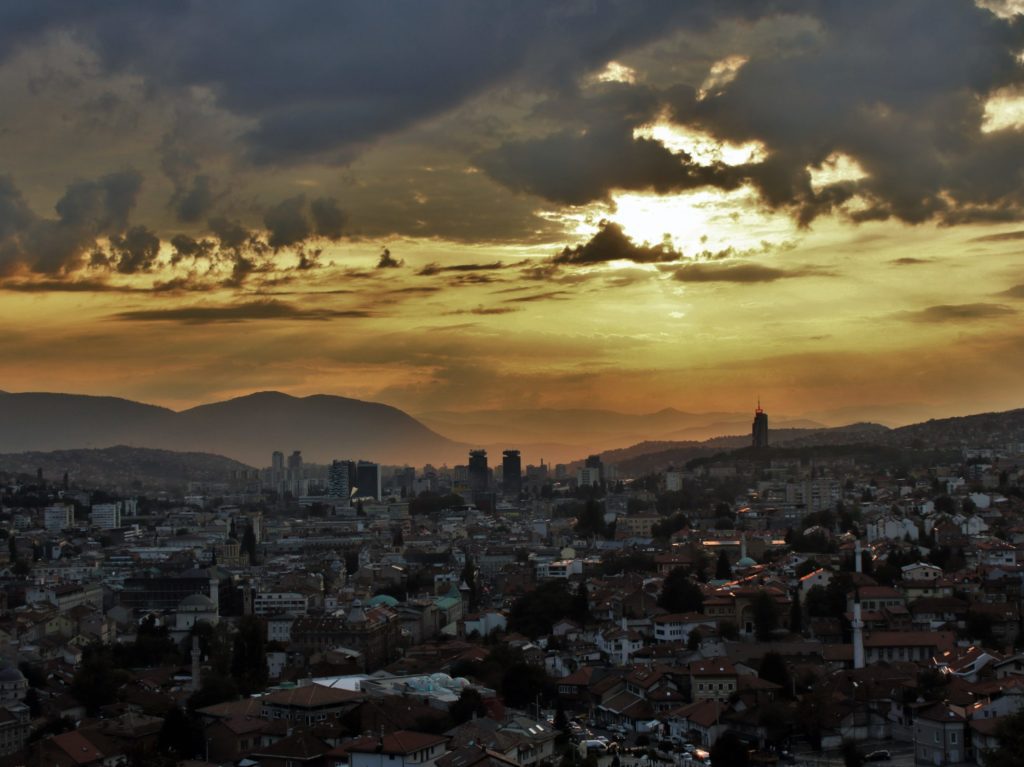
Odnośnik zwrotny: The history of Bulgaria's dancing bears - Wobbly Ride
Odnośnik zwrotny: Best cycling routes in the Balkans - Wobbly Ride